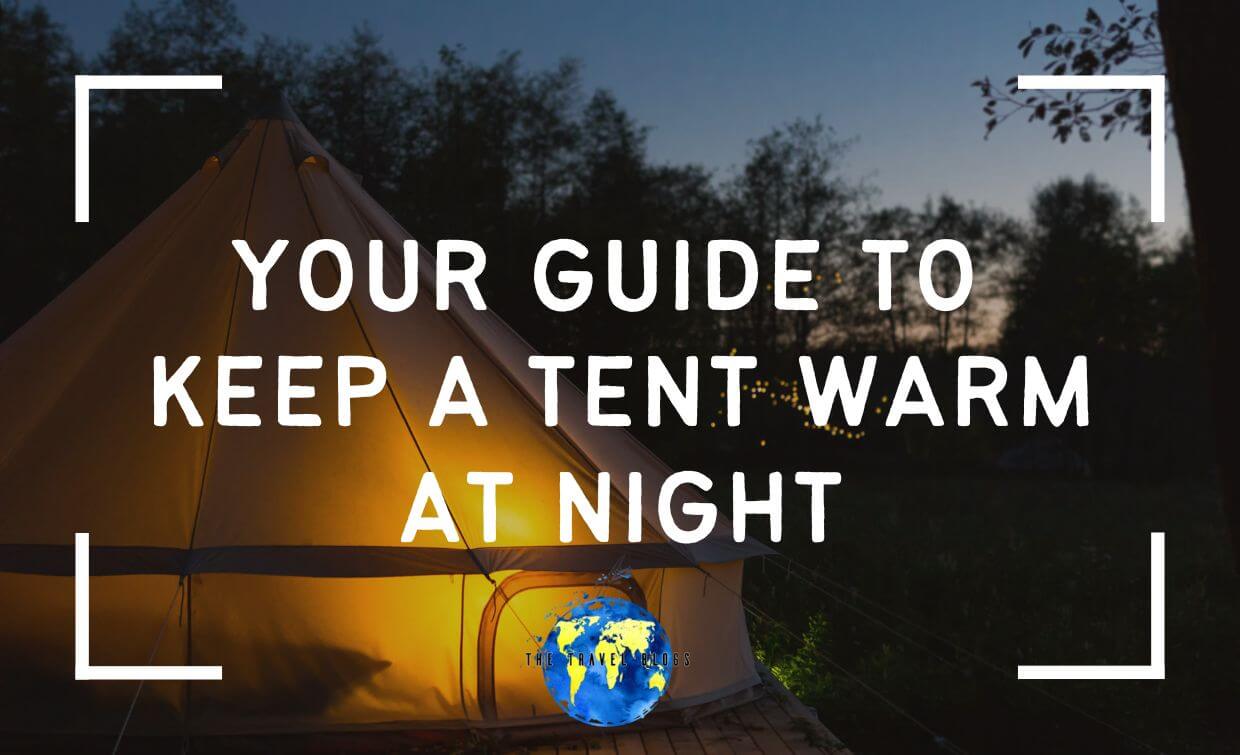Keeping a tent warm in the cold weather is a challenge. The colder it gets, the harder it is to stay warm. We don’t want to walk around in our skivvies or, worse yet, tunnels under our shelter. To help you stay warm and dry while camping in the winter months, be sure to choose a system that will allow you to set up your tent in just a few minutes.
You should know how to keep warm while camping this winter. While it might tempt you to get your feet wet and stay inside, it is just not always safe. To keep warm while camping, you will need to check out these various tips. These tips will help you be comfortable throughout your trip and may even save you some money! Let’s dive in.
Coming your way in this post - click to expand ->
Note – Please know, some of the external links on this page are affiliate links, this means that if you purchase after following one, I make a small commission from the sale at no additional cost to yourself.
Use a Tent Heater
An efficient propane heater is handy and versatile if you are rapidly setting up furniture or other items, as in backpackers or caravans. Look for one that’s easy to use and will give steady heat no matter how humid it is in the tent.
The last thing you need is to stop what you are doing to turn on the heat or worry about it running out until you get home. It is not a good idea to leave a heater unattended when you are camping or even hiking. The best rule of thumb is to leave it in the bedroom, where it will be off when you are asleep (though it should still be warm when you get up).
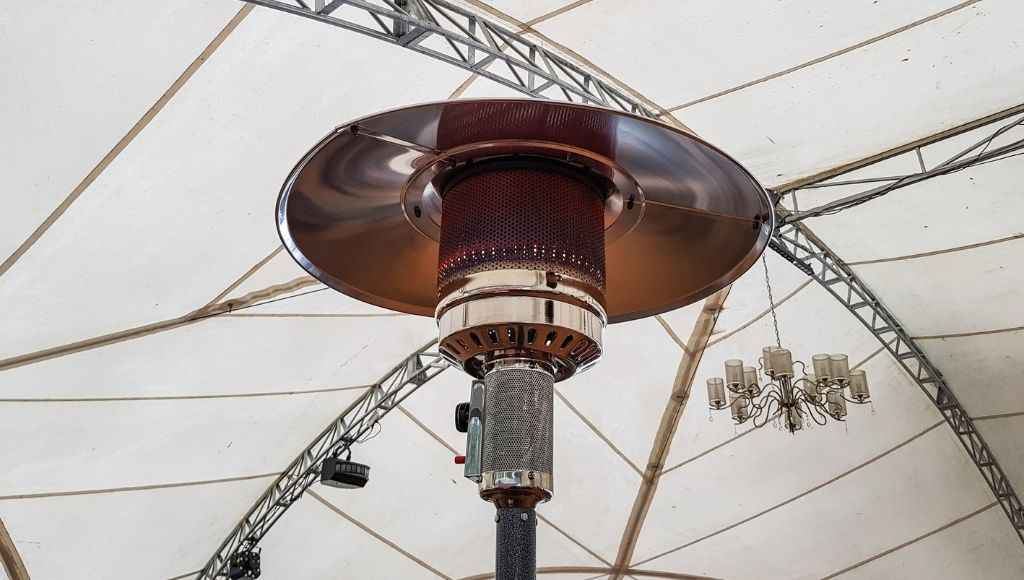
Where Should You Place The Tent?
Putting up a tent is an important logistical and creative task. It’s important to consider the placement of your tent. There are many factors to consider, such as whether you want a daytime, midday, or nighttime pitch and whether you want to block views or wind (which will also affect how much insulation you’ll need).
The selection of materials used matters. Pine and spruce are suitable materials that can hold up over time, while nylon and polypropylene are more vulnerable to weather damage. This can make an enormous difference in how warm your tent feels when you lay it out for the first time.
You might have to pitch your tent in the middle of the forest, far from people and supplies. In either case, pitching it next to spring might bring you water (if you have any plants), but without any protection from the freezing weather.
The best approach when pitching your tent is to start with is a general area of your choice, then expand/decide from there. Before you know it, you’ll have narrowed down your choices to a few options that offer the best combination of shelter and warmth.
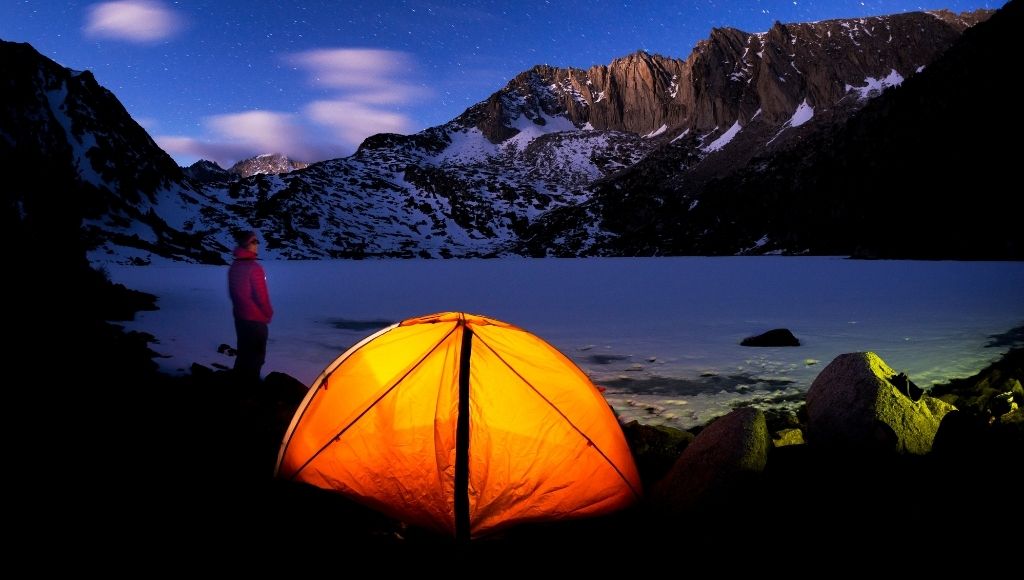
Invest in High-Quality Sleeping Bag
When choosing the best sleeping bag for your trip to the campground or skiing holiday, you want to think about the manufacturer’s rating. The higher the rating, the better. Think of insulation, versatility, warmth, and outer shell material.
Once you have narrowed down your choices, it’s time to look at the specific features that each bag will need. While some may have the versatility or warmth for winter sports, others won’t hold up well in hot summer temperatures. Finally, choose a warm enough sleeping bag.
The best thing to do on colder nights is to spread out your sleeping bags evenly on the ground. This will prevent mats from sliding off and causing you to lose your stuff. You can also use a plastic bag over your sleeping bag to keep the cold air out. It will block out the cold air from blowing into your sleeping bags, and it will keep the ground from excess moisture.
Check out some of the best sleeping bag options here: Best Sleeping Bags
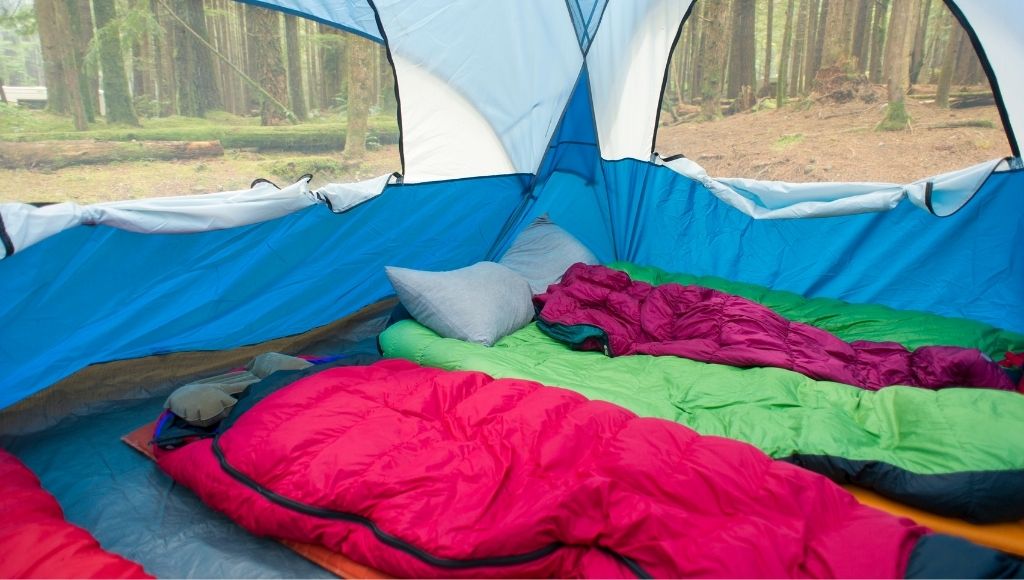
Use Campfire Stones
The idea is the heated stones will absorb heat from your fire and keep it warm while you sleep. You can place the heat rocks anywhere on the ground and keep the tent warmer (monitor them, though; they can go berserk if left unattended for too long).
The heat from these stones will keep your tent warm and can even get frostbite if you sit under a tree inside the shelter for too long. It takes only a few minutes for the hot rocks to heat through the air. As soon as you place them in the fire, you’ll find your tent is nicely warm. In addition, you. to the touch.
When combined with a rain fly and some tarp, an effective camping setup can protect you against cold nights. Whether you use natural materials (cotton) or artificial materials like aluminum foil, aluminum foil can serve as an excellent outdoor heater.
You can also check out: Camping Cot vs Air Mattress
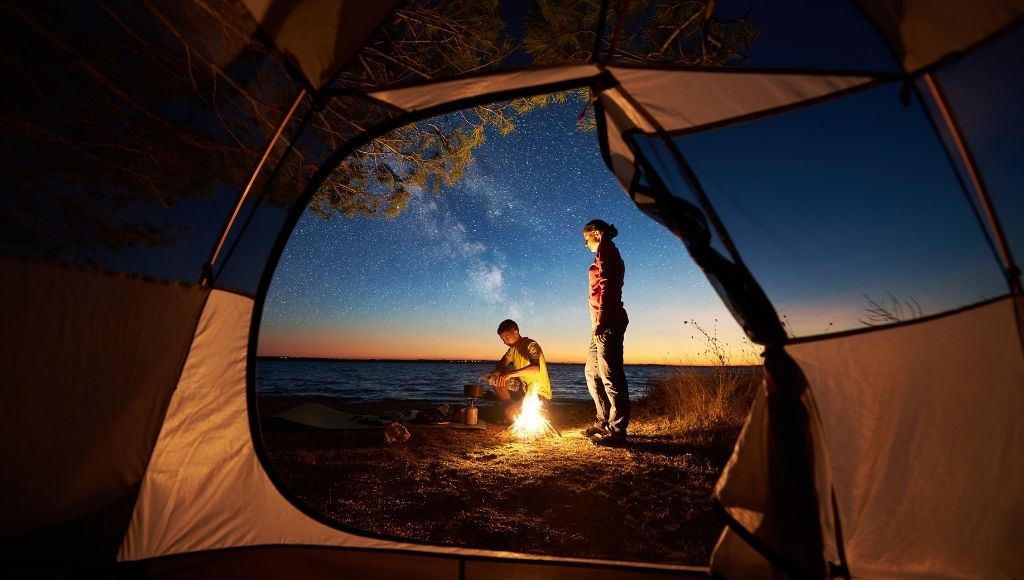
Take The Right Food
A well-rounded diet comprises several important components. Your diet should include various nutrients, vitamins, and minerals to support good digestion and warm your body. Warmth in the body is generated once metabolic processes in the body occur. Therefore, eating the right foods and a balanced diet will help you stay warm.
Warming your tent overnight may seem like an odd thing to do, but it will help you stay warm and prevent hypothermia. So not only will your body get the energy it needs to function correctly, but you’ll also be helping litterbugs out by taking up their cause.
Carry Hot Water Bottles
If you are going to be spending a lot of time outdoors, one of the best ways to stay warm is by carrying hot water bottles. These bottles work by warming you up before you even get out of your sleeping bag. This works in that when you’re cold, your body responds by maintaining heat by contracting blood flow through the skin.
Unfortunately, this process causes pain and swelling, which means you are less able to fight off infections. Using a hot water bottle before you get into your sleeping bag will slow down this process, which means you will get rid of the pain associated with the cold before it’s late.
If you want to heat your tent, you may even consider using a propane bottle, which is much less expensive than the hot water bottles and will provide you with instant warmth. As for contents, the hot water bottle needs to be filled with hot water—not just anything around.
Sometimes just placing a couple of hot water bottles inside your sleeping bag will not warm your sleeping pad up enough to keep you comfortable. In these cases, it may be necessary to purchase additional heat packs or insulating materials to ensure that your pad stays comfortable and hot.

Use Insulated Tents
Insulated tents do not allow as much heat to escape as uninsulated tents. Therefore, you will need to figure out if you need an insulated tent or not, depending on your camping preferences. However, heat can be lost through the walls of an insulated tent if it is not maintained properly, resulting in moisture build-up.
To prevent this from happening, you should dust bedding down inside each night before putting it up for the night. In addition, you can purchase a lightweight tent that has taped seams for ventilation.
A hot tent can not only save you some money on a camping trip but also protect you from the bitter cold and snow, keeping your body warm and dry year-round. On the other hand, a cold tent will let some moisture in, which can lead to mold or mildew growing on the inside walls of your tent, slowing down your heat absorption. In addition, a well-insulated tent will prevent your sleeping bag from getting wet in cases of rain.
You can either buy an insulated tent or insulate yours. Here is how you can insult your tent.
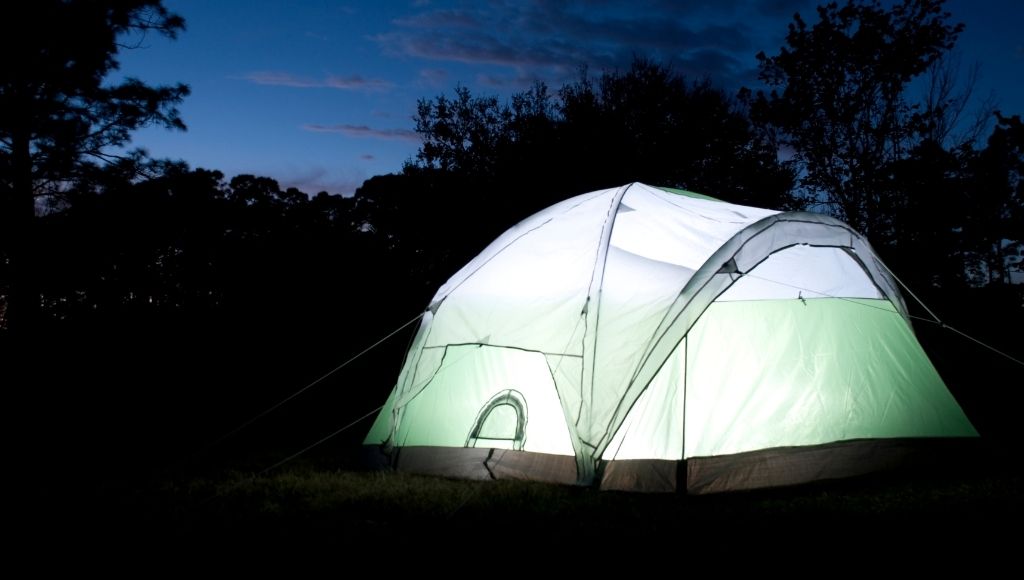
Under the Tent
You don’t want your sleeping bag or ground shelter to get wet (especially in late winter or early spring). If you don’t want your sleeping bag to be freezy when set on low heat, then lay a thin layer of insulation underneath it (a couple of inches to a foot).
Remember, as the ground heats and transfers warmth from your body to the ground, it will pull warmth away from your body.
Use Tarps Over Top of Your Tents
Insulation of your tent should be tight enough to ensure your comfort while allowing enough ventilation. At the same time, you will want the insulation to pull away from your body when needed (e.g., in fantastic weather). To do this, you will want to use a pliable material that won’t easily rip or rip apart when crushed. Look for layers that have a lot of fleece-type material on top.
Investing in outstanding quality cheap tarps work wells- there’s no way they could rip.
Insulating materials often come in different thicknesses. Thick insulation will help keep the inside of your tent warm even when you aren’t using it every day.
However, the wider the insulation, the heavier it will be, so you should consider how you will use your tent before purchasing it. Luckily, with the proper material choice and preparation, you can save money by buying the right type and thickness of insulation for your needs.
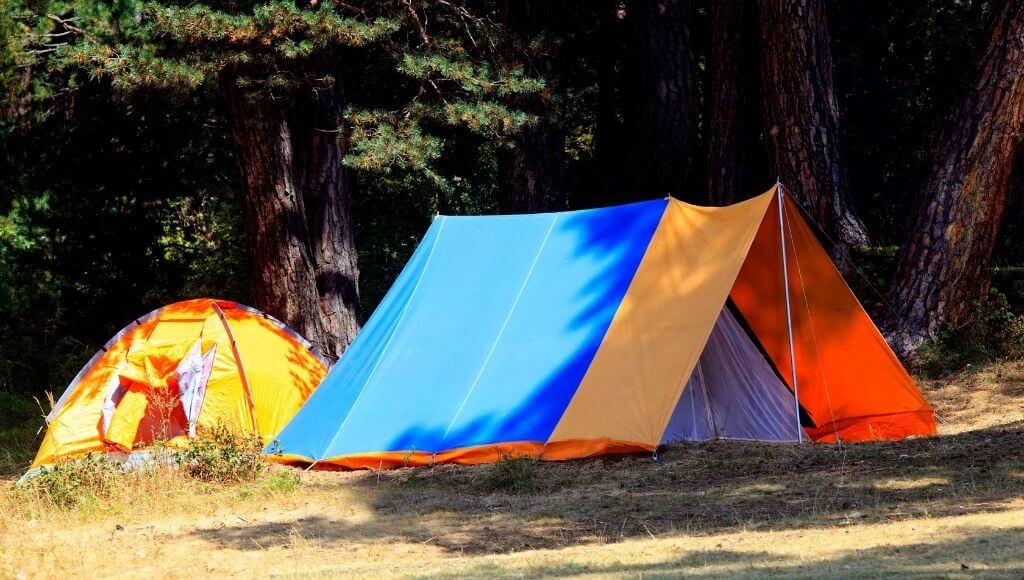
Change Clothes Before Sleeping
Whether you’re just setting your tent up or already settled in, it never hurts to change into a set of clean clothes. It may only be a little thing, but if you start to nod off, having cold and clammy damp clothes against your skin can keep you awake. So instead, put on some dry, warm clothes and enjoy the rest of your night under the stars. And if it gets stormy while you’re asleep, dry clothing can make all the difference in avoiding hypothermia.
Just wearing some fresh clothes before going to sleep can allow you to feel warmer and more comfortable. Warm clothes trap the body heat, thus keeping you warm and dry.
Cover Your Head and Feet
Never sleep without covering your head. If you’re using a mummy bag, wrap it as snugly around your head as possible — the less air circulating through the bag and off of your head, the better. When using a sleeping bag, use only one rated for temperatures lower than what you expect to encounter in the field. If you feel cold at night, always consider adding an extra layer or two when in camp.
A good pair of insulated boots will go a long way to help keep your feet warm. If you can’t afford that, then wrap your feet up to protect them from the cold. A thin pair of rags around your feet will also help insulate you from the cold ground. If all else fails, add another sleeping bag to your body and make sure it covers your head.
Use Sleeping Bag liner
Those who have not tried a sleeping bag liner before are another great way to increase comfort when camping in cooler weather. A good sleeping bag should get the job done without the liner. You can still get waterproof liners that will help protect your sleeping bags from staining. By anything that might be on the ground you sleep on.
The only real downside to using a sleeping bag liner is that it doesn’t add any warmth. Of course, that is, if you use an already well-insulated sleeping bag. If you plan on using a liner, you should use a lighter-weight and cheaper bag for warmer weather.
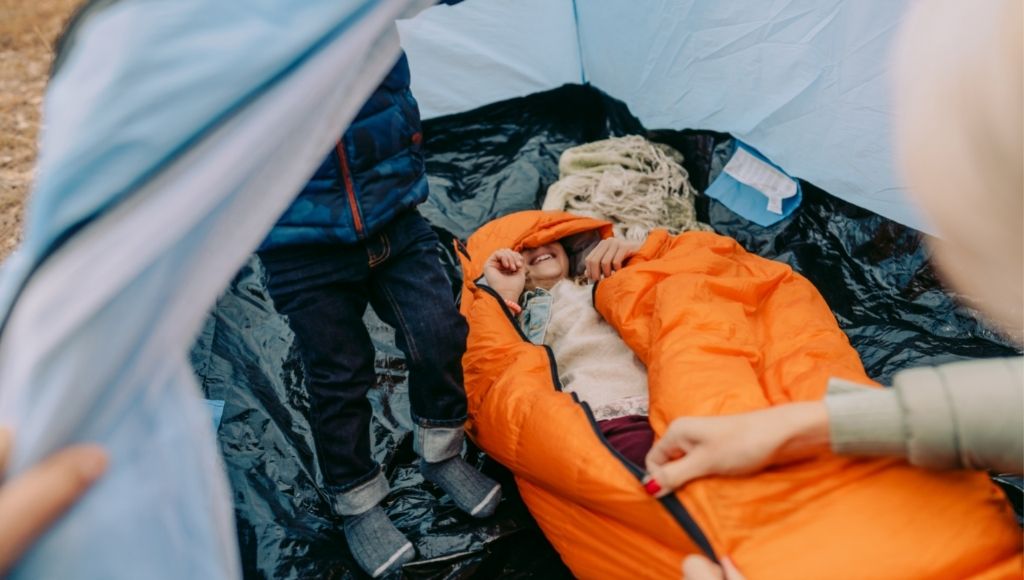
Keep Yourself Warm
Increasing your body’s surface area to maintain warmth is critical for sheltering you from the bitter in winter camping. Your clothes should be cold friendly too to stay warm. For example, if the wind is blowing from one side and you are wearing a light top with no insulating underneath, you will need to add a layer underneath.
Warmth comes from densely packed clothing with one or more inches of insulation on either side of the clothes. National Geographic calls this “clumping” clothing. Clothing with more insulation inside helps transfer heat to your body better when it’s cold. Warmth also comes from wearing items made with several consecutive layers, like long johns or scarves.
Best Clothing for Wintry Nights
The best sleeping clothing is made from quality materials. You want to use synthetic insulation while using a down bag to stay warm for extended periods. Look for warm weather gear in winter, like wrist warmers or beanies, and lighter items that will keep you comfortable throughout the night.
Once you have chosen your sleeping style, layout your belongings, and place the items, you will need them close to each other. This helps keep warm because you don’t have to stretch out your items over several surfaces or worry about getting them dirty.
After placing all of your supplies within easy reach, secure the items with zip ties or use them as pillows by keeping them flat against the sleeping pad. Then slip on your long thermal underwear and close the lid on your sleeping bag. By this, you are protected from the cold throughout your camping trip.
The Size of The Tent
If you are a solo camper or a small family, consider getting a small tent for your needs. There is nothing worse than trying to heat a big tent. However, smaller tents have less surface area and take a short period to get warm inside. It will also be much easier to pitch in the rain or wet outside with a small tent.
If you choose a large tent, use a lot of heat to avoid condensation. If the temperatures drop below freezing, you risk the tent getting covered in water droplets, which will make it much harder to keep warm and dry inside.
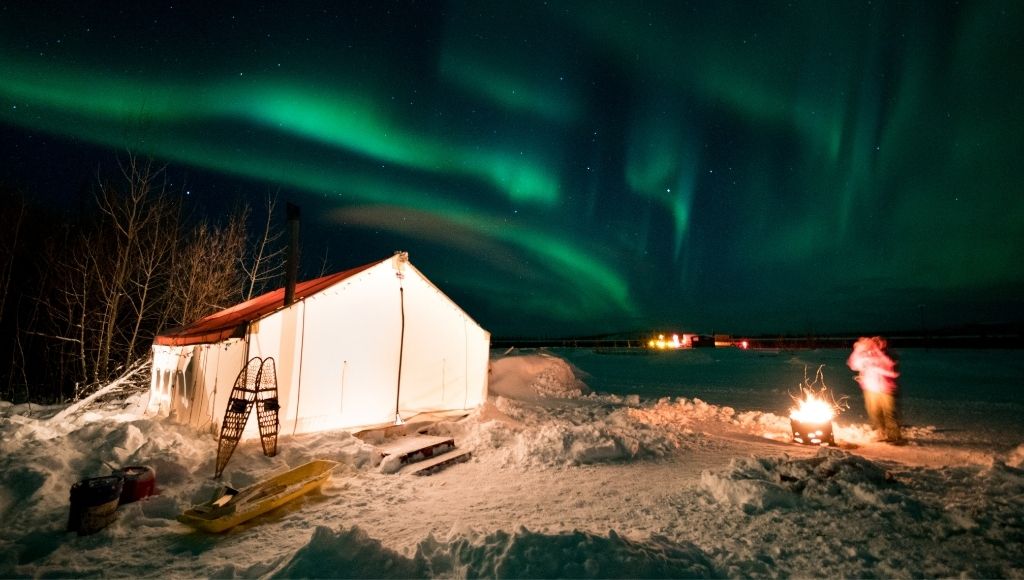
Plan and Research Your Camping Trip
Weather affects everyone in different ways. Maybe it’s hot today in the midmorning; then afternoon, it’s cold. At the same time, the next day, it can be cold and slightly blowing snow. It’s hard to plan out what you’re going to wear in case it changes dramatically overnight.
However, you can help yourself out a lot by looking up information about the area. For example, you can check out from local weather stations of your potential campsite and discover the site’s weather. Planning means you won’t have to stress about clothes or food when you go out. This will facilitate a great camping experience.
Wrapping Up
Camping is a great way to have fun and get away from it all. The downside of going camping is that it can get cold. It can also be messy and if you are disorganized. In contrast, if you prepare correctly, you can make the best of it.
One of the best ways to make sure your tent stays warm is to put up a tarp for privacy when you aren’t in use. Another great option is to use a warming bag or camp stove. Heating granules will keep your body warm for an extended period, even if it is cold outside. Warming foods like nuts and seeds can also speed up the tent warming process. Happy camping!
